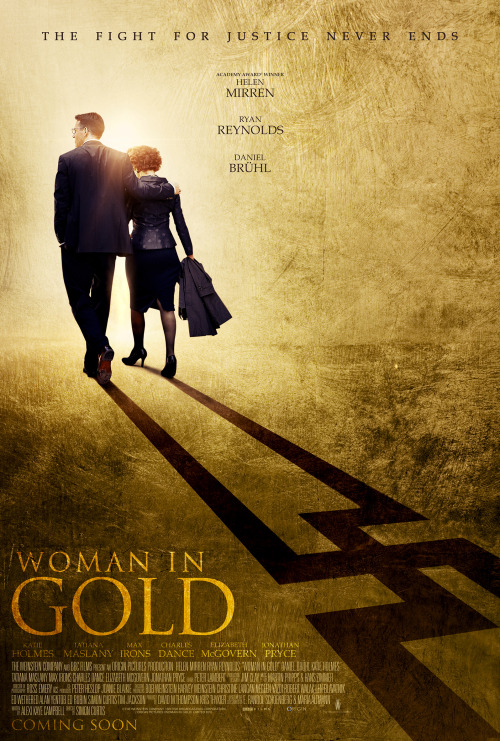
“We
should be reunited with what is rightfully ours.”
Do you have an object such as a photograph or piece of
jewelry or piece of furniture or a piece of clothing or china set, etc. that
has holds special memories and meaning to you and your family? Is it an object
that when you or a family member look at a flood of memories from a specific
moment in time rushes to your mind?
There is a saying “the most important things in life aren’t
things.” This saying to me is like “money can’t buy happiness.” Of course money
can buy you happiness it can make you comfortable. And there are without a
doubt physical things in your life that are important to you and your family. Things
hold memories of good and bad times, of people that are no longer in your life,
or a moment or even a person you want to cherish forever.
During World War II Hitler and the Nazis took things away
from the Jews. They looted religious artifacts, jewelry, clothes, china, and most
especially art. What they looted was not just solely inanimate objects they
stole memories and culture and hard work. The Nazis went into peoples’ homes
and told them they had no right to what they had because they were Jewish and
inferior and inferior people should not have the privilege of owning anything
valuable. Pride was also another thing that was also stolen.
One of the most famous pieces of art that was stolen
during World War II was Portrait of Adele
Bloch-Bauer by the Austrian Secessionist artist Gustav Klimt. The
Block-Bauer family had been a patron to Klimt. They commissioned him to make
several works of art for them but their pride was in his portrait of Adele. Adele
was beautiful and intelligent. She had a great magnetism that pulled people
into her orbit. She loved her country, her heritage, and her people. Adele
unfortunately died tragically young at age forty-three of meningitis. Her
husband Ferdinand never fully recovered from her loss. For decades after the
War Maria Altmann, Adele’s niece, never forgot her aunt and her beautiful
portrait, or how the Nazis forced her and her husband to leave their beloved
Vienna and family behind forever. The movie The
Woman in Gold, based on the book The
Lady in Gold by Anne- Marie O’Connor, tells the story of how Maria Altmann,
with the help of a lawyer who was also a family friend, took on the Austrian
government to have her aunt’s portrait and all of her memories of a good life
she had to leave behind returned to her.

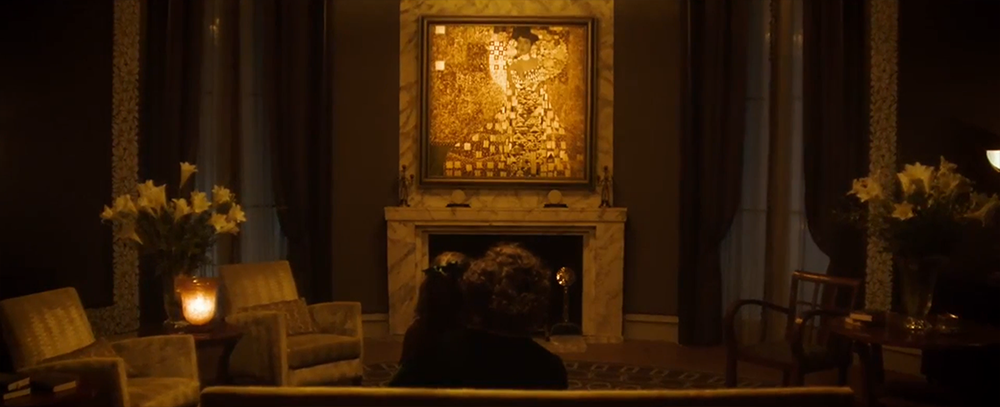

Maria’s (Helen Merrin) sister Luise has just passed away.
At the funeral is a family friend whose son is a lawyer. She asks her friend to
have her son Randy (Ryan Reynolds) contact her. Randy is a young man in 1998.
He just accepted a job at a big law firm and he has a young wife and baby
daughter. Maria wants Randy to help her try to get back her Aunt Adele’s
portrait from the Austrians. Randy is given time by his law firm to explore the
matter but only for one week.
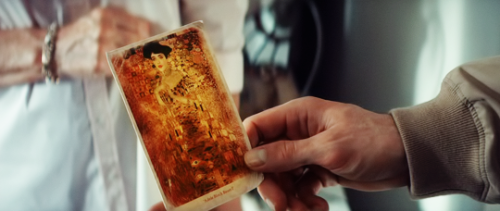
The Austrian government has an art restitution committee.
They hold a meeting in which Maria and several others speak about what happened
to their families and what was taken from them and never returned. The
committee absolutely refuses to return The
Woman in Gold it is considered the epitome of Austrian art and culture and
their version of The Mona Lisa. They
also state that it was in Adele’s will that all her art work by Klimt be given
to the Belvedere Museum, where it had been since World War II, upon the death
of her husband. There are several issues with Adele’s will: one, it was on a
piece of paper and not official, and two, the most important was that she was
not the rightful owner her husband was and therefore had no right to leave them
to the museum. Of course the museum blew that off and so did the committee.
Years and years pass as Randy and Maria try everything in
their power to have The Woman in Gold
returned. Finally Randy decides that he
is going to sue Austria. His plan works. The case makes it all the way to the
Supreme Court and comes to a close in the courts of Austria which grants Maria
with ownership of the portrait.

To know much more than what I was able to articulately
write and explain, I highly encourage you to research the painting, the legal
battle, and to read O’Connor’s book (the book is poorly written in my opinion
but the information in it outweighs the bad writing and editing).
Based off the small summary I gave of the movie if you
are wondering how can a work of art by a painter who lived over a hundred years
ago be worth so much for an old woman fight for? It is mostly the idea of
attached memories. The last scene of the movie is Maria Altmann walking into
the apartment on Ringstrasse in Vienna and a flood of memories return to her.
She sees her Aunt Adele following her and her sister around the house playing
with them, her Uncle Ferdinand shows her a passage in a book he is reading, she
sees her father happily playing his cello, in another room memories of her
wedding come back to her, and in the last room she sees the portrait of her
aunt hung prominently over the fireplace and the real Adele standing underneath
it. That is what the portrait meant to Maria Altmann. It meant memories of her
happy family and her loving aunt and the save comfortable home of her
childhood. It represented not only happiness but also of all the people and
things she had to leave behind in order to flee safely to America away from the
Nazis. (That was my favorite part of the entire movie it was beautiful. I genuinely
teared up a little bit).
Another very important reason Maria wanted the portrait
back and out of Vienna is because of the country’s role in World War II. The Austrians
allowed Hitler and the Nazis to basically walk right in and take over. Austria
has memory loss when it comes to WWII. Or better yet they chose to have that
memory loss. Many of the people claim that their country was the victim that they
were a conquered people when they were in reality not. One of the greatest
atrocities the museum and the Nazis did to the portrait was to change the
portrait’s title. They changed the title from Portrait of Adele Bloch-Bauer to simply The Woman in Gold. By changing the name to something simple and
understated they stripped Adele of her Jewish identity and heritage.
The Portrait of
Adele Bloch-Bauer was sold to Ronald Lauder’s (Estee Lauder’s son) NeueGalerie in New York City for $135 million dollars. I remember reading about
this before I knew the whole story of the painting and being quite upset
because the woman fought for it, took it out of Vienna, and then sold it. But
now after reading the book and knowing more about its history and of Austria’s
attitude it makes perfect sense for Maria to have done what she did with the portrait.
Ronald Lauder was once an ambassador to Austria and was a collector of late 19th
century/early 20th century German and Austrian art. Maria Altmann
stipulated that the portrait of her aunt should always be on display for people
to see.
I want to point out that the art we see in museums was
never meant to be seen in museums. Portraits, like Adele’s were meant to be hung
in homes and to be seen by family and guests. Ancient religious relics were
meant to be used in ceremonies to worship gods and goddess. Rooms were meant to
be in the homes or buildings for which were originally part of. They had an
identity within their context. Every single piece of art be it a painting, a
room, a sculpture, suits of armor, etc. has lost their context. Museums can, try
as they might to, supply as much information on a piece as they can but its
truest meaning has been lost in transference from place to place. They have
been stripped of their original intent and identity much like Adele Bloch-Bauer’s
portrait was just not to the extreme extent hers was.
Now that I have gone over some of the true story let’s
get back to a movie review.
Despite the story being incredibly fascinating I feel it
would not have work as well had Helen Mirren and Tatiana Maslany not been cast
in the role of Maria Altmann. Obviously, Mirren played the older Maria and
Maslany played the younger. The two women have an incredible ability to adapt
to whatever role they are given. Mirren and Maslany are forces of immense
talent. Maria Altmann would have been a very good character as the older
version but the younger version would not have worked as well had there been an
actress in the role other than Maslany. This may seem like I am being biased
but I am a huge fan of Maslany’s from her show Orphan Black where she plays nine
(yes, I said nine) different clone characters to such insane perfection that
you have a favorite clone. I have seen all twenty episodes of Orphan Black countless times and I still
have to remind myself that the same girl is playing all these different women
with all this baggage and back story. Maslany is just amazing. You can see how
hard she works and how deep she cares for her characters because she makes
playing them all look effortless. In The
Woman in Gold, she makes the emotional heaviness of playing Maria Altmann
when she had to leave her family look effortless and completely heartbreaking. When actors and actresses are great in
whatever roles they are given you can see their dedication come through. With
Mirren and Maslany you can see their dedication and that is why the character
of Maria Altmann, both young and older, was fantastic.

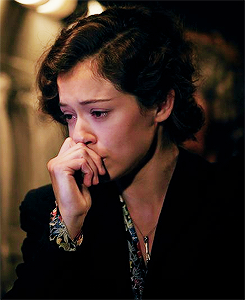

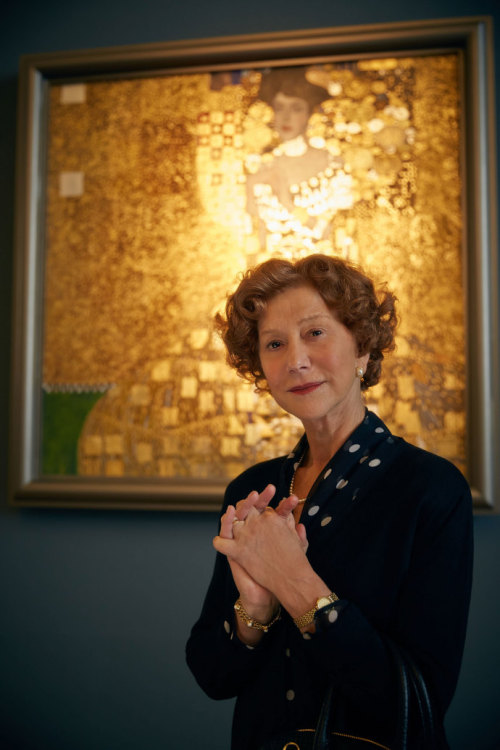
(I do not know if any of what I just wrote makes any sense.
It is hard to articulate my view of these two women because I adore them both
actresses they are just so immensely talented)
Ryan Reynolds did a good job playing Randy. Randy was not
an extraordinary character he was an ordinary character with not such an
extraordinary history like Maria. I will say that Reynolds did a great job
portraying Randy’s kindness, perseverance, and determination. Daniel Bruhl is
one of the top billed actors above the title but he is barely in it and he does
not leave a mark whatsoever on the story or movie. Katie Holmes played Randy’s
wife. She is just a waste of film.
The Woman in Gold
as a movie was more than I could have hoped for. I had been so exited ever
since hearing the story was being made into a movie but I did not want to get
my hopes up because of the Monuments Men movie which I thought was terrible.
Fortunately The Woman in Gold
exceeded my expectations. I have a BA in Art History and MA in Museum
Registration. I understand art and I understand art/museum laws/ethics. Art law
and museum ethics are what make this story so fascinating. Plus the idea of who
owns art is also fascinating. Restitution from World War II is still happening
to this day. Over 100,000 pieces of art are still missing. For my one museum
class I had to read an article about looted art. The author wrote that Nazi
looted art is one of the greatest unresolved issues of World War II. Over
eighty years later Hitler is still creating problems. Maria Altmann’s case is
one such case that has brought art restitution to the attention of the public.
The Woman in Gold
on the surface is about Nazi looted art. But when you look deep enough it is a
story of stolen memories, pride, love, and families. It is about the power of
art and how much a work of art could mean to people. To me art is a thing on
which to place your emotions and create memories around even if they are
hanging in a museum and you do not physically own them. I understand all the different
ways that art moves people and how powerful that bond with a work of art can be
(I go crazy for John Singer Sargent’s Madame
X. To me there is no greater feeling in the world than when I stand in
front of that sassy woman). In America we are not fortunate enough to know what
it is like to truly care for a masterpiece of our country’s art. We do not have
that one defining piece of American art that we would do battle for if it ever
came to a point where it might leave the country. You do not need to know what
doing battle for a piece of art would feel like or even know what it feels like
to be emotionally attracted to be work of art to be enraptured, enthralled, and
entertained by The Woman in Gold.
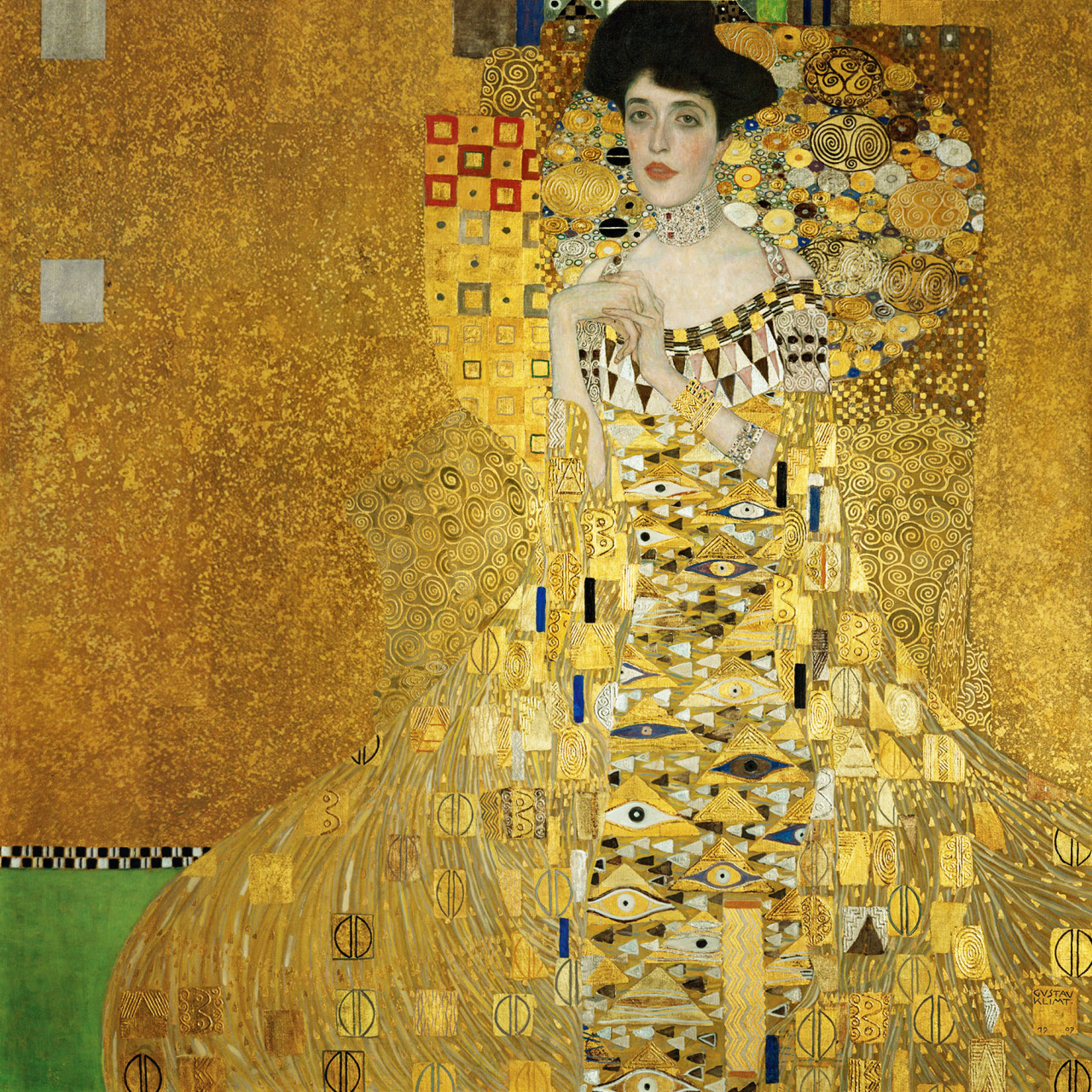
No comments:
Post a Comment